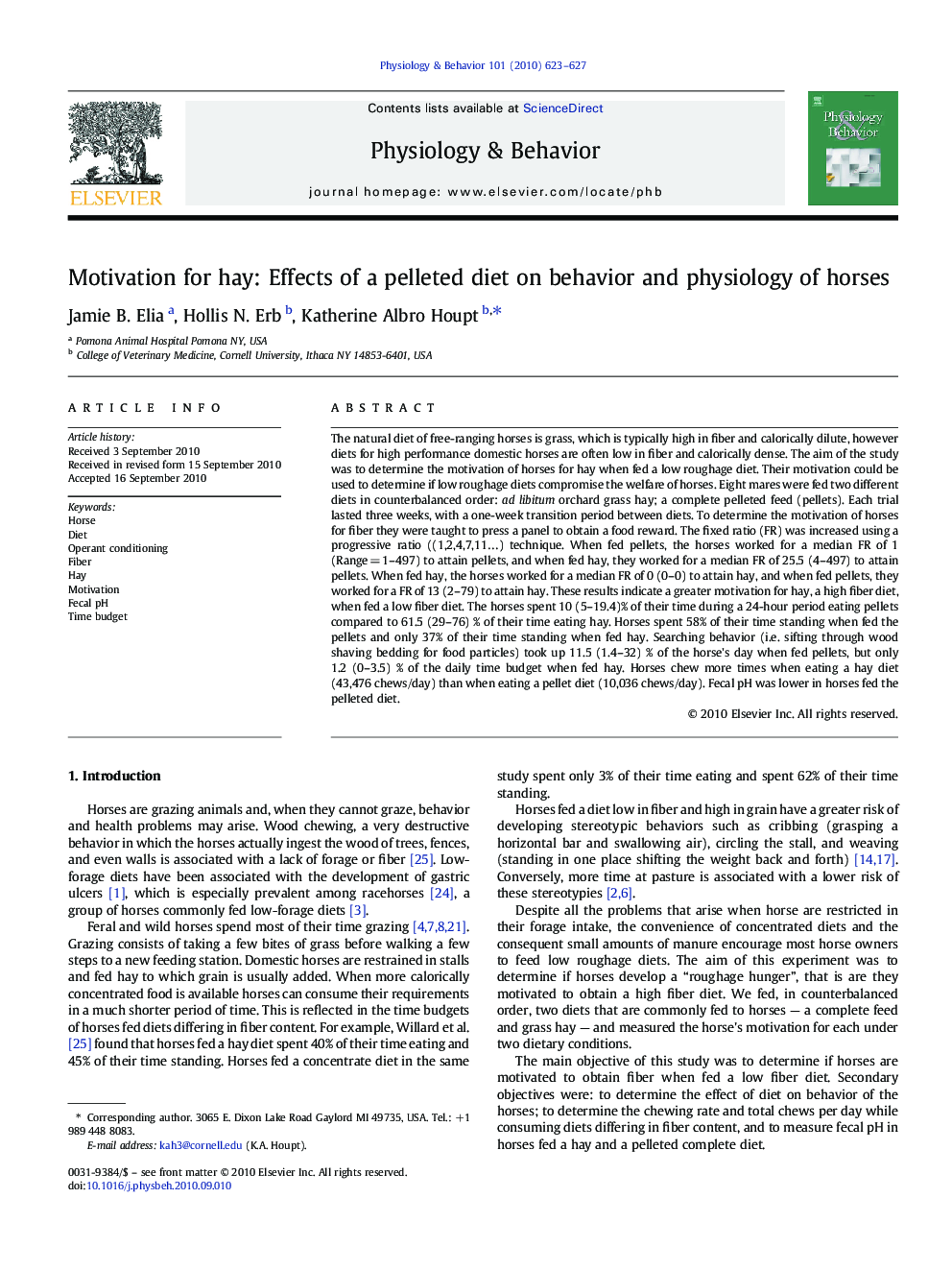| کد مقاله | کد نشریه | سال انتشار | مقاله انگلیسی | نسخه تمام متن |
|---|---|---|---|---|
| 2844801 | 1166365 | 2010 | 5 صفحه PDF | دانلود رایگان |

The natural diet of free-ranging horses is grass, which is typically high in fiber and calorically dilute, however diets for high performance domestic horses are often low in fiber and calorically dense. The aim of the study was to determine the motivation of horses for hay when fed a low roughage diet. Their motivation could be used to determine if low roughage diets compromise the welfare of horses. Eight mares were fed two different diets in counterbalanced order: ad libitum orchard grass hay; a complete pelleted feed (pellets). Each trial lasted three weeks, with a one-week transition period between diets. To determine the motivation of horses for fiber they were taught to press a panel to obtain a food reward. The fixed ratio (FR) was increased using a progressive ratio ((1,2,4,7,11…) technique. When fed pellets, the horses worked for a median FR of 1 (Range = 1–497) to attain pellets, and when fed hay, they worked for a median FR of 25.5 (4–497) to attain pellets. When fed hay, the horses worked for a median FR of 0 (0–0) to attain hay, and when fed pellets, they worked for a FR of 13 (2–79) to attain hay. These results indicate a greater motivation for hay, a high fiber diet, when fed a low fiber diet. The horses spent 10 (5–19.4)% of their time during a 24-hour period eating pellets compared to 61.5 (29–76) % of their time eating hay. Horses spent 58% of their time standing when fed the pellets and only 37% of their time standing when fed hay. Searching behavior (i.e. sifting through wood shaving bedding for food particles) took up 11.5 (1.4–32) % of the horse's day when fed pellets, but only 1.2 (0–3.5) % of the daily time budget when fed hay. Horses chew more times when eating a hay diet (43,476 chews/day) than when eating a pellet diet (10,036 chews/day). Fecal pH was lower in horses fed the pelleted diet.
Research Highlights
► Horses will work for a high fiber diet when fed a low fiber diet.
► When eating a low fiber diet horses change their behavior, spending more time.
► Standing and less time eating.
► Horse chose a novel over a familiar diet.
Journal: Physiology & Behavior - Volume 101, Issue 5, 2 December 2010, Pages 623–627